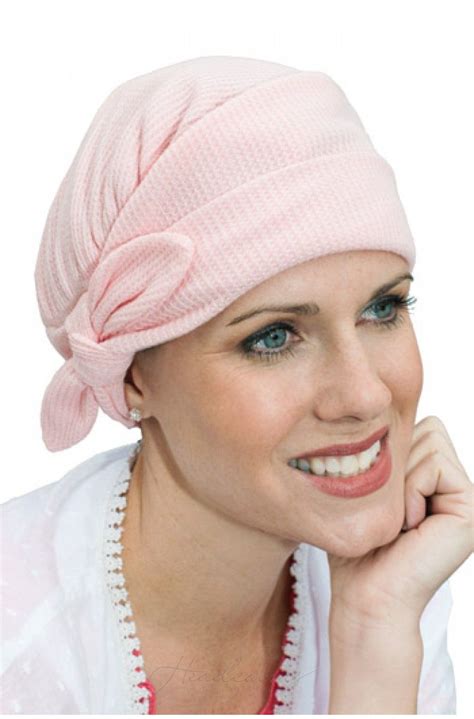Chemotherapy can cause hair loss, which can be a difficult and emotional experience for women. However, there are many ways to manage hair loss and still feel beautiful during treatment.

1. Choose a Hat That Fits Well
The most important thing when choosing a chemotherapy hat is to find one that fits well. A hat that is too loose will fall off, and a hat that is too tight will be uncomfortable. You should also choose a hat that is made from a soft, comfortable fabric.**
2. Experiment with Different Styles
There are many different styles of chemotherapy hats available, so you can find one that matches your personal style. You can choose from hats made from cotton, silk, wool, or other materials. You can also find hats with different colors, patterns, and embellishments.**
3. Accessorize Your Hat
You can accessorize your chemotherapy hat with scarves, headbands, or jewelry.** This can help to add a personal touch to your hat and make it more comfortable.
4. Be Creative
If you don’t find a chemotherapy hat that you like, you can always make your own.** There are many different ways to make a chemotherapy hat, so you can find one that is perfect for you.
5. Talk to Your Doctor
Your doctor can help you to choose a chemotherapy hat that is right for you.** They can also provide you with information on other resources that can help you to manage hair loss during treatment.
Chemotherapy hats offer many benefits for women undergoing treatment.**
- Can help to reduce hair loss. Chemotherapy hats can help to keep your hair in place during treatment.** This can help to reduce the amount of hair that you lose.
- Can help to protect your scalp. Chemotherapy hats can help to protect your scalp from the sun and other elements.** This can help to prevent dryness, itching, and other scalp problems.
- Can help to improve your self-esteem. Chemotherapy hats can help you to feel more confident and beautiful during treatment.** This can help to improve your overall quality of life.
Chemotherapy hats are important for women undergoing treatment for cancer. They can help to reduce hair loss, protect your scalp, and improve your self-esteem.
If you are undergoing chemotherapy, talk to your doctor about getting a chemotherapy hat.** You can also find chemotherapy hats online or at local stores.
There are a few common mistakes that women make when wearing chemotherapy hats.**
- Wearing a hat that is too tight. A hat that is too tight can be uncomfortable and can cause headaches.**
- Wearing a hat that is made from a rough fabric. A hat that is made from a rough fabric can irritate your scalp.**
- Not washing your hat regularly. Your hat can collect bacteria and other contaminants, so it is important to wash it regularly.**
- Not wearing a hat when you are outdoors. The sun can damage your scalp, so it is important to wear a hat when you are outdoors.**
Chemotherapy hats can be used for a variety of purposes beyond their traditional use.**
- As a sleeping cap. Chemotherapy hats can help to keep your head warm and comfortable while you sleep.**
- As a head covering for religious or cultural reasons. Chemotherapy hats can be worn to cover your head for religious or cultural reasons.**
- As a fashion accessory. Chemotherapy hats can be worn as a fashion accessory, even if you are not undergoing treatment for cancer.**
When choosing a chemotherapy hat, it is important to consider the wants and needs of customers.**
- What are the customer’s personal style preferences?
- What are the customer’s hair loss concerns?
- What are the customer’s budget constraints?
By understanding the wants and needs of customers, you can choose a chemotherapy hat that is perfect for them.**
Chemotherapy hats can be a valuable resource for women undergoing treatment for cancer. They can help to reduce hair loss, protect your scalp, and improve your self-esteem.
If you are undergoing chemotherapy, talk to your doctor about getting a chemotherapy hat.** You can also find chemotherapy hats online or at local stores.
Additional Information
- The American Cancer Society provides a variety of resources on chemotherapy hats: https://www.cancer.org/treatment/treatments-and-side-effects/physical-side-effects/hair-loss/chemotherapy-hats.html
- The National Cancer Institute provides a guide to choosing a chemotherapy hat: https://www.cancer.gov/about-cancer/treatment/side-effects/hair-loss/chemotherapy-hats-pdq
